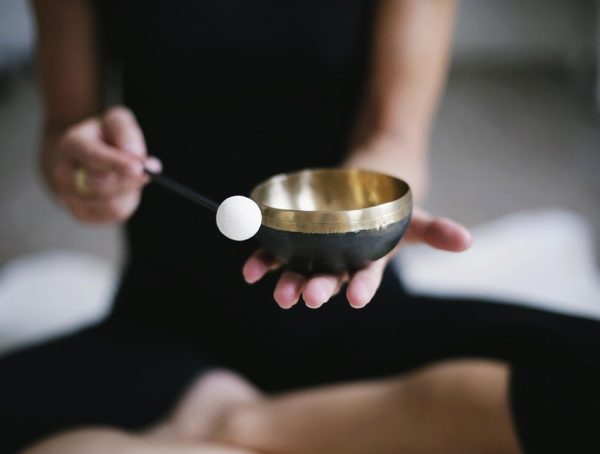Understanding the 7 Types of Meditation for Beginners: A Path to Inner Peace
Meditation has become a popular practice in recent years, evolving from ancient traditions to modern techniques embraced by people from all walks of life. As we seek deeper perspectives and take charge of our mental health, understanding the different types of meditation can empower us to find the style that resonates with our unique needs. This article explores seven meditation types for beginners while offering actionable steps to help you embark on your journey.
1. Mindfulness Meditation
Mindfulness meditation is perhaps the most well-known form of meditation. It emphasizes being present in the moment without judgment. This practice helps cultivate awareness and acceptance of your thoughts and feelings.
How to Get Started:
- Find a quiet space and sit comfortably.
- Close your eyes and focus on your breath.
- Note when your mind starts to wander—acknowledge it without judgment and gently bring your focus back to your breath.
- Start with just five minutes daily and gradually increase as you become more comfortable.
2. Guided Meditation
Guided meditation involves listening to a recorded meditation led by an instructor. This format can provide direction and structure, making it an excellent option for beginners.
How to Get Started:
- Search for guided meditation apps or YouTube channels (like Headspace or Insight Timer).
- Choose a session that fits your mood (relaxation, focus, sleep).
- Find a comfortable position, close your eyes, and follow along with the voice.
- Aim for a few minutes each day to build a habit.
3. Transcendental Meditation (TM)
Transcendental Meditation is a specific form designed to foster deep relaxation and heightened awareness through the use of a mantra—a specific word or sound repeated silently.
How to Get Started:
- Find a certified TM instructor for personalized guidance, as TM requires training.
- Designate a time and quiet space for practice.
- Once you learn your mantra, sit comfortably and repeat it silently for 15-20 minutes, twice daily.
- As thoughts come to mind, acknowledge them and return to your mantra.
4. Loving-Kindness Meditation (Metta)
Loving-Kindness Meditation focuses on developing an attitude of love and kindness toward oneself and others. It’s particularly effective in fostering compassion and self-acceptance.
How to Get Started:
- Sit comfortably and close your eyes.
- Begin by silently repeating phrases like, “May I be happy, may I be healthy, may I be safe, may I live with ease.”
- Gradually extend this kindness to loved ones, acquaintances, and even those with whom you have conflicts.
- Aim for 10-15 minutes of practice a few times a week.
5. Body Scan Meditation
Body Scan Meditation fosters a deep sense of relaxation by bringing awareness to different body parts in succession. This practice can release tension and enhance physical awareness.
How to Get Started:
- Lie on your back or sit comfortably with your eyes closed.
- Start at your toes and gradually bring your focus upward through your body: feet, legs, hips, abdomen, and so forth.
- As you focus on each area, consciously relax it.
- Spend about 20-30 minutes, checking in with different areas to reside in the present.
6. Zen Meditation (Zazen)
Zen Meditation, or Zazen, is often practiced sitting in a specific posture while focusing on your breath. It’s more structured than some other forms, inviting practitioners to observe thoughts and sensations without attachment.
How to Get Started:
- Sit in a comfortable position with your back straight (lotus or half-lotus is common in Zen).
- Focus on your breath or a koan (a paradoxical question) if you’re familiar with this aspect.
- Notice when thoughts arise, acknowledging them, then return to your breath.
- Set a timer for 10-15 minutes, gradually increasing as you practice.
7. Chakra Meditation
Chakra meditation targets the body’s energy centers, known as chakras. The objective is to balance these centers to foster overall well-being, making it an excellent practice for those interested in holistic health.
How to Get Started:
- Research the seven chakras and their associated qualities and colors (Muladhara, Swadhisthana, Manipura, Anahata, Vishuddha, Ajna, Sahasrara).
- Meditate while focusing on each chakra, visualizing its color and energy flow, and affirming its attributes.
- Spend 10-15 minutes focusing on one chakra at a time, or rotate through all seven.
Final Thoughts
As you embark on your meditation journey, remember that there’s no “right” or “wrong” way to meditate. It’s about discovering what works best for you. Commit to a daily practice, even if for just a few minutes, and explore the different styles. Your mind, body, and spirit will thank you.
Before you dive into meditation or expand your practice, consider writing down your intentions—what you hope to gain from meditation. Reflecting on your progress over time can be immensely rewarding.
Lastly, remember that consistency is key. Setting aside time each day to meditate can lead to transformative changes in your life.
"Your body is a temple, but only if you treat it as one." – Astrid Alauda
If you enjoyed this content and want to learn more about mindfulness, health, and well-being, follow Kevin on Instagram (@KSteineman) for daily inspiration and resources.
You might also like
More from Meditation
The Role of Mantras in Transcendental Meditation: A Deep Dive
The Role of Mantras in Transcendental Meditation: A Deep Dive Transcendental Meditation (TM) has garnered a significant following across the globe, …
The Science Behind Meditation: Improving Mental Health Naturally
The Science Behind Meditation: Improving Mental Health Naturally In today's fast-paced world, the pursuit of mental wellness has become paramount. Thousands …
The Ultimate Guide to the Three Types of Meditation
The Ultimate Guide to the Three Types of Meditation Meditation is more than just a tool for relaxation; it’s a thriving …

































